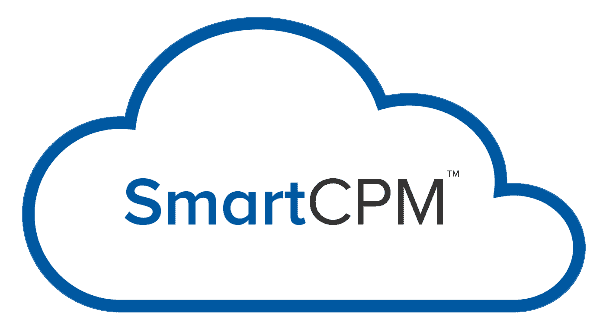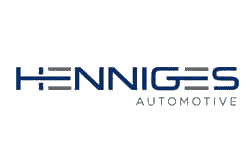Now that we are approaching the 10-year anniversary of the end of the last recession in 2009, there has been a lot of speculation in the financial markets about how long the current economic expansion can last. Are we headed for a recession, an economic slowdown, or continued growth? Good times or bad times ahead?
There is a lot of debate and varying opinions from economists about what lies ahead. But in the most recent Deloitte CFO Signals Survey, nearly 85 percent of CFOs said they expect a U.S. downturn by the end of 2020, and they overwhelmingly expect a slowdown rather than a recession. Those expecting a downturn were most likely to cite U.S. trade policy, business and credit cycles, and the impacts of slowing growth in China and Europe on the U.S. economy.
Impact on Corporate Strategies and Plans
Given the survey results, what are CFOs doing about the possibility of an economic downturn? According to Deloitte, less than half of CFOs surveyed say they have defensive plans for a downturn and, as for offensive planning, just one-quarter cite a detailed plan. The most common defensive actions mentioned revolve around reducing discretionary spending and limiting or reducing headcount. If an economic downturn or recession does occur, this will likely also have an impact on capital spending. But what does it mean for spending on information technology (IT) investments?
The consensus on IT investment spending from Deloitte and other sources is generally positive. Many organizations are in the middle of digital transformation – pursuing key initiatives such as moving applications to the cloud and investing in new technologies such as artificial intelligence (AI) and machine learning (ML) that can automate tedious tasks and processes and make organizations more efficient.
Impact on Investments in CPM Software
What about the impact of an economic downturn on investments in CPM Software? Having worked in the corporate performance management (CPM) market for over 20 years, I’ve seen firsthand that demand for CPM software solutions has continued through several economic downturns and recessions. Why? Well if we think about it, first generation CPM 1.0 software products for financial consolidation, reporting, budgeting and other processes provided organizations a viable alternative to spreadsheets and manual processes and helped Finance and IT teams become more productive.
Fast-forward to 2019 and CPM 2.0 software platforms are offering huge improvements over fragmented CPM 1.0 products – unifying and simplifying CPM processes and providing more advanced capabilities. With the ability to deploy these solutions in the cloud, they also eliminate IT infrastructure and staffing requirements and ease the pain of upgrades. And today’s modern CPM 2.0 solutions, or what we call SmartCPMTM solutions, can leverage new technologies such as robotic process automation (RPA), artificial intelligence (AI) and machine learning (ML) to automate key tasks and unleash Finance teams to focus more time on value-added tasks.
CPM 2.0 software platforms can help organizations thrive in times of economic growth – and help them survive in economic downturns. While corporate performance management solutions make day-to-day tasks such as financial consolidation, reporting, budgeting, forecasting and variance analysis much easier, they also support more advanced processes and tasks that are essential to CFOs and Finance teams in navigating today’s volatile markets. This includes best practice processes such as:
- Strategic Planning and “What-if” Scenario Modeling
- M&A Analysis, Planning and Integration
- Driver-based Rolling Forecasts for More Agile Planning
- Planning Workforce Expansions or Reductions
- Evaluating and Planning Capital Expenditures
- Assessing and Planning New Product Launches, or new Market Entries
- Zero-Based Budgeting and Improved Expense Management
- Allocations and Profitability Management for Improved Resource Allocations
- Detailed, Real-Time Management Reporting
- Cash Flow Forecasting and Management
These capabilities are important ones for CFOs and Finance departments in good times – so they can respond quickly to changing market conditions and optimize resource allocations. And they are also essential in economic downturns – to more closely monitor revenues, control expenses and forecast cash flow requirements.
CPM platforms also help CFOs understand profitability by product lines, geographies, and customer segments – to support more informed decisions about where to potentially reduce costs during a downturn. And if your organization is being held back and is spending an excessive amount of time and money maintaining and upgrading fragmented, legacy CPM products – now is a great time to invest in a modern CPM 2.0 platform to reduce complexity and total cost of ownership going forward.
Real-World Examples
Here are a couple of examples of organizations who are leveraging CPM 2.0 software to help them survive and thrive in good times and bad times.
Dril-Quip, Inc. is one of the world’s leading manufacturers of offshore drilling and production equipment  for deepwater applications used by oil and gas companies and drilling contractors in offshore areas throughout the world. So, they need to ride the ups and downs of the oil and gas market.
for deepwater applications used by oil and gas companies and drilling contractors in offshore areas throughout the world. So, they need to ride the ups and downs of the oil and gas market.
The Finance team at Dril-Quip was using Microsoft Excel spreadsheets as a consolidation and reporting tool for their month end close process. Inconsistencies in data collection via Excel spreadsheets created a lengthy and inefficient close process for Dril-Quip. Further, the lack of visibility senior management had within geographic segments limited the ability to make strategic decisions.
Budgeting and Forecasting were prepared in Excel using a top-down approach. The regional controllers were responsible for taking the Excel spreadsheets from each entity and department within their responsibility and aggregating the data into income statement format using Excel formulas. Drivers and versioning were disjointed and not easily identified.
Dril-Quip selected and implemented OneStream’s CPM 2.0 platform to deliver multiple solutions to meet all their financial reporting and planning requirements in one application. This included:
- Corporate Financial Consolidation and Reporting
- Global Rolling 18-month Forecast
- Sales Planning – leveraging data from Oracle CRM and an internal backlog report
- People Planning to manage headcount and salary planning
- Capital Planning to manage fixed assets and depreciation planning
By Automating the collection and consolidation of financial results, including currency translation and intercompany reconciliations, Dril-Quip has shortened the monthly close cycle by 3 days, and internal management reports that used to take approximately 1 day to prepare and distribute, are now created and distributed in in minutes. In addition, moving from Excel spreadsheets to OneStream has streamlined budgeting and planning, aligned financial and operating plans, enabled the organization to adopt an 18-month rolling forecast to gain needed agility. As a result, Dril-Quip is saving 60 days annually on the aggregation of monthly forecasts – freeing up the finance team to focus on other value-added tasks.
Henniges Automotive provides automotive original equipment manufacturers (OEMs) with sealing  systems for doors, windows, trunks, lift gates, sunroofs and hoods. The company also supplies the automotive market with anti-vibration components and encapsulated glass systems. Henniges sells to all major Automotive OEM customers and operates facilities in North America, South America, Europe and Asia.
systems for doors, windows, trunks, lift gates, sunroofs and hoods. The company also supplies the automotive market with anti-vibration components and encapsulated glass systems. Henniges sells to all major Automotive OEM customers and operates facilities in North America, South America, Europe and Asia.
Henniges previously used Hyperion Enterprise as a consolidation tool and Hyperion Retrieve for reporting. They also used a home-grown SQL database for all data loading, integration, and mapping activities. The company wanted a unified solution for all their financial consolidation and reporting, forecasting, and analysis – all maintainable by the same staff that maintained Hyperion Enterprise.
Henniges initially implemented OneStream XF to deliver multiple solutions to meet all their financial reporting requirements in one application including; corporate financial consolidation and reporting, Sales/EBITDA bridging, management reporting, purchase accounting and conversion to IFRS in 2017.
Henniges also had a need for more detailed customer and product profitability analysis and extended their implementation to address these requirements in 2017. This entailed integrating non-GL data and leveraging OneStream to harmonize, store, allocate, and aggregate the data at a detailed (part number) level. The solution helps Henniges perform detailed allocations and produce a summarized P&L (thru EBITDA) for any part, vehicle, product, or customer.
According to Linda Hellebuyck, Corporate Controller at Henniges, “The OneStream solution has streamlined the financial close and delivers more timely and powerful management and ad hoc reporting for management and business users.” Moreover, the solution provides Henniges management with deeper insight into what pieces of the business are producing (or not producing) bottom-line profits, for improved decision-making across the business.
Learn More
Whether it’s having the ability to withstand the ups and downs of oil prices or the automotive industry, survive an economic downturn, or take advantage of new market opportunities – having a modern, agile CPM system and processes is essential to surviving and thriving in good times and bad times. To learn more, visit our web site to read and hear additional OneStream customer testimonials, or contact us if you are ready to unleash your finance team from the limitations of spreadsheets and legacy CPM applications.
Get Started With a Personal Demo



